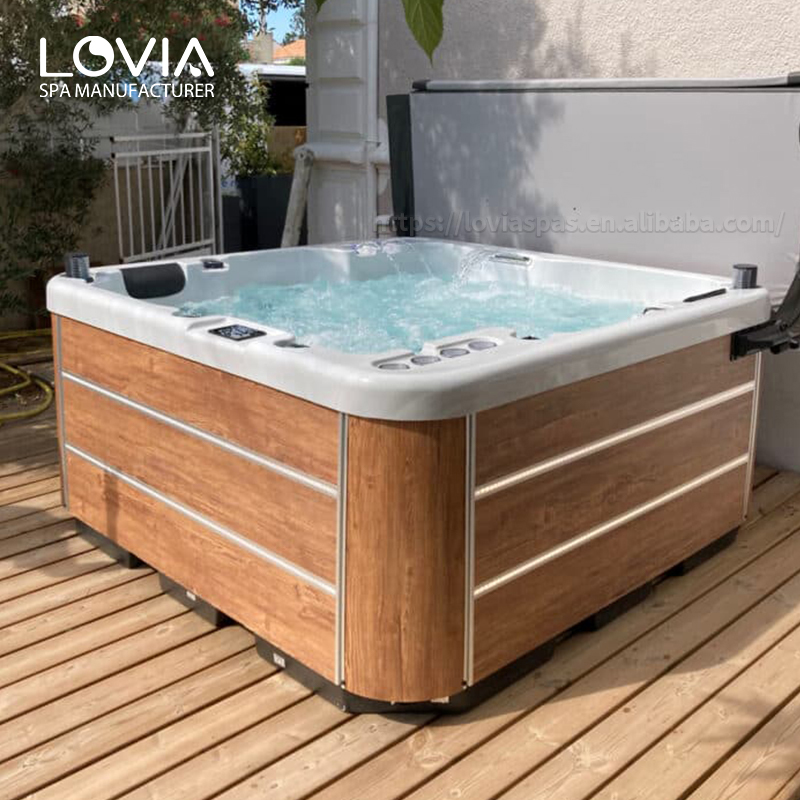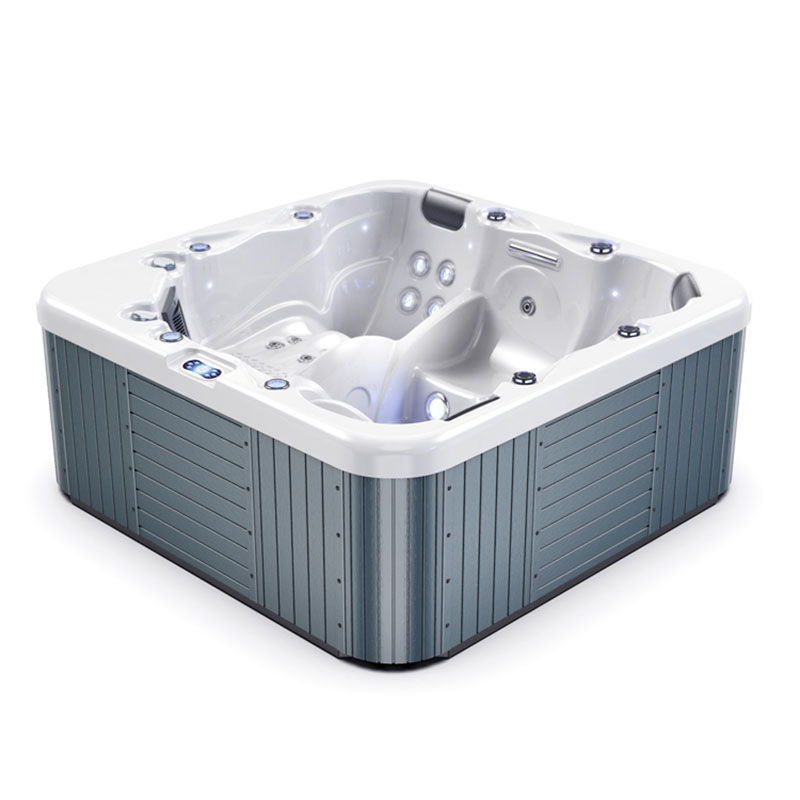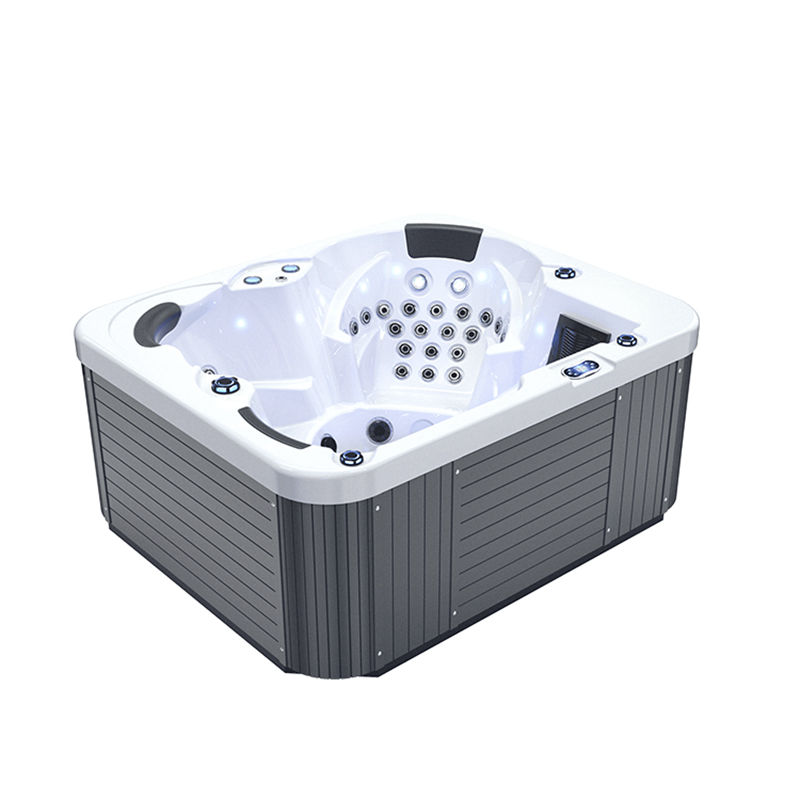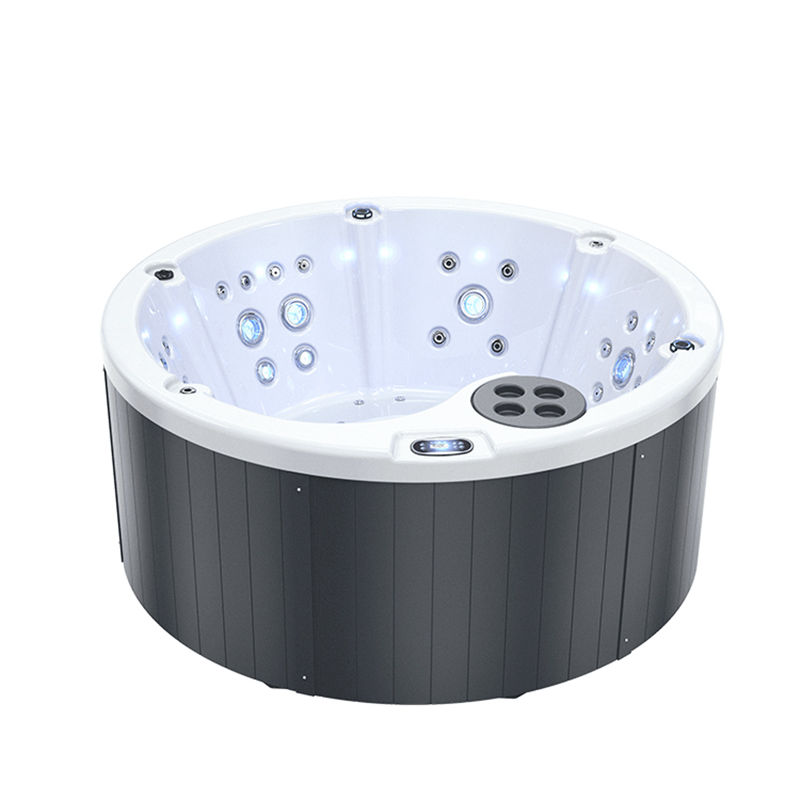With the continuous improvement of people’s quality of life, outdoor hot tubs are becoming more and more popular among families. However, the complexity of the outdoor environment makes keeping bathtub water quality up to standard an important daily maintenance task. Substandard water quality not only affects the user experience, but may also pose a threat to health. So, how to judge whether the water quality of outdoor hot bathtub meets the standard? We interviewed several experts to break it down for you.
The importance of water quality testing
Outdoor hot tubs are exposed to the natural environment and are easily contaminated by external factors such as dust, rain, fallen leaves, and animals. In addition, oil, sweat and cosmetic residues on human skin can also affect water quality. If the water quality is not up to standard, it can cause skin allergies, eye irritation and respiratory problems. Therefore, regular testing and maintenance of water quality is crucial.
Key indicators to determine whether water quality meets standards
Experts point out that to judge whether the water quality of an outdoor hot tub meets the standard, you need to pay attention to the following key indicators:
1. pH value
The pH value reflects the acidity or alkalinity of water. For a hot tub, the ideal pH level should remain between 7.2 and 7.8. A pH value that is too low (acidic) can cause equipment corrosion and irritate skin and eyes; a pH value that is too high (alkaline) can easily cause scale problems and reduce the effectiveness of disinfectants.
2. Chlorine content
Chlorine is the most commonly used water disinfectant and can effectively kill bacteria and viruses in water. Ideally, free chlorine levels in swimming pools and hot tubs should be maintained at 1-3 ppm (parts per million). Chlorine levels that are too low will result in ineffective disinfection, while levels that are too high may cause skin and eye irritation.
3. Alkalinity
Alkalinity refers to the total amount of carbonates, bicarbonates, and hydroxides in water. A suitable total alkalinity range is 80-120 ppm. If the alkalinity is too low, the pH value will easily fluctuate; if the alkalinity is too high, it will lead to scale deposition and turbid water quality.
4. Calcium Hardness
Calcium hardness refers to the content of calcium ions in water. The ideal calcium hardness range for hot tubs is 150-400 ppm. Calcium hardness that is too low will cause water to corrode bathtub equipment, while calcium hardness that is too high will easily form scale.
5. Total dissolved solids (TDS)
TDS refers to the total amount of all dissolved substances in water. With long-term use of a hot tub, dissolved solids in the water will accumulate. It is generally recommended that the TDS value does not exceed 1500 ppm. If it exceeds this value, some or all of the water needs to be replaced.

Water quality testing methods
1. Use test reagents
There are various kits on the market for testing water quality, including pH reagents, chlorine reagents, alkalinity reagents, calcium hardness reagents, etc. The method of use is usually to mix water samples with reagents and judge various indicators through color changes. The test kit is simple to operate, affordable and suitable for home users.
2. Use an electronic tester
Electronic testers such as pH meters, chlorine meters and TDS meters can quickly and accurately detect water quality indicators. These instruments are easy to use and provide accurate readings, but are relatively expensive. For users who care about water quality management, electronic testers are a worthwhile investment.
3. Send samples to professional laboratories
For users who have concerns or require a more comprehensive water quality analysis, water samples can be sent to a professional laboratory for testing. Laboratory testing can provide detailed water quality reports, including microbial testing and chemical analysis. Although this method is more expensive, the results are authoritative and reliable.
Measures to maintain water quality standards
1. Change water regularly
Regularly changing the water in the bathtub is an important means to maintain water quality standards. It is generally recommended to change all the water every two to three months and perform a thorough cleaning when changing.
2. Use disinfectants
Regularly add an appropriate amount of chlorine or other disinfectants to keep the disinfectant content in the water within an appropriate range to ensure the safety of water quality. Pay attention to the usage and dosage of different disinfectants to avoid overdose.
3. Install the filtration system
An efficient filtration system can effectively remove impurities in the water and keep the water clean. Clean or replace the filter regularly to ensure proper operation.
4. Control frequency of use
Reasonably control the frequency of hot tub use to avoid rapid deterioration of water quality due to overuse. Try to shower before use to reduce body oil and dirt from entering the bathtub.
5. Use a protective cover
When your hot tub is not in use, cover it with a protective cover to prevent outside contaminants such as dust, leaves, and rainwater from entering.
Expert advice
Experts suggest that regular testing and maintenance of the water quality of outdoor hot bathtubs can not only extend the service life of the equipment, but also protect the health of users. For busy modern people, reasonable arrangement of time for water quality testing and timely handling of discovered problems are the keys to ensuring that water quality meets standards.




